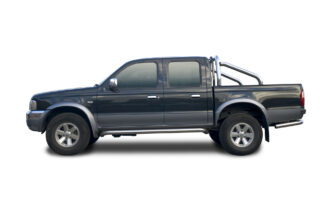With diversification of farms at the forefront of many farmers’ minds, it is common to look at the properties on a farm and consider whether these can be let, particularly as a holiday let. With the upcoming development at Sizewell C it can reasonably be expected that there will be increasing demand for short stays for people involved with the project, which may well present lucrative opportunities for local farmers.
Whilst this presents a chance to generate a further income stream, there are several tax considerations to ensure the letting does not generate any future tax problems and that you maximise the reliefs available. Furnished Holiday lets (FHL) FHLs bring a number of tax benefits, but the starting point is to look at whether the letting of the property qualifies as an FHL.
To qualify, it is necessary for the following conditions to be met:
- The property must be available for let for 210 days during the year.
- It must be let for 105 days (this excludes any lettings which last for longer than 30 days).
- The property must be furnished.
If these requirements are not met, the property will be classed as an investment rental property and will not benefit from various tax reliefs below. Income Tax As you would expect, income arising from the property will be subject to income tax by the individual or entity (eg Partnership or Company) that owns the property.
This is an important point to consider as assets can often be considered as partnership assets but may be owned personally by a partner or may be held in Trust. Any expenses incurred wholly and exclusively in relation to the letting can be deducted in calculating the profits, such as agent’s fees, insurance, heating and electricity costs.
Once key area of difference between a FHL and an ordinary let property is that of finance costs, such as mortgage interest. For an FHL, the interest and any associated costs can be deducted in full when calculating the profits. Ordinarily these are restricted to basic rate relief but for FHLs full relief is available, which can present a significant tax benefit, particularly where finance is required to renovate the property before letting. Capital allowances Capital Allowances can be claimed on the cost of furnishing the property, including white goods and furnishings, giving tax relief on the initial costs to furnish the property ready for letting. Pension As a side point, the income from a FHL qualifies as earnings for the purposes of pension contributions. Pension contributions cannot exceed your relevant earnings, and FHL income can therefore help top up your earnings to allow further pension contributions to be made (subject to annual allowances), which can be particularly helpful, for example if there is a bad harvest with poor income returns.
Capital Gain Tax (CGT) Where the furnished holiday let conditions are met there are several CGT benefits as the property is effectively treated as a trading business. This means the property can benefit from relief such as Business Asset Disposal relief if it is sold. This gives a reduced CGT rate on any capital gain of 10%, compared to 18% for a basic rate taxpayer, and 28% for a higher rate taxpayer.
There are other conditions around the ownership period of the property, and it must have been let as an FHL for two years prior to sale. The property can also benefit from holdover relief, which can be particularly beneficial when looking to pass assets to future generations without wanting to incur an immediate CGT liability.
Holdover relief works by deferring the capital gain by effectively transferring the property at the owner’s base cost. This means that there is no immediate tax charge. Whilst gifting a property and claiming holdover relief could form part of overall IHT (inheritance tax) planning, it is important for it to be considered in the context of your overall estate.
Inheritance Tax (IHT) position Where a property is let as a furnished holiday let, it is often expected that Business Property Relief (BPR) will also follow. BPR can give relief up to 100% where the conditions are met and most commonly applies to trading businesses. Whilst FHLs are seen as a trading business for CGT this is not necessarily the case for IHT.
To qualify for Business Property Relief, it is necessary to show that additional services are provided as part of the letting, so that activity is deemed to be more than an investment. Simply taking reservations, cleaning the property and carrying out general maintenance will not be sufficient. Additional services need to be undertaken, such as booking local restaurants, providing or arranging activities for guests during their stay. This is not an exhaustive list, and each case must be considered on its own merits.
It is clear from the cases that have been through court that the level at which additional services are deemed to be sufficient is high and will need to be carefully planned in order to satisfy HMRC (HM Revenue and Customs). Should BPR not be available, you may be exposed to IHT on the value of the property, which could land you with an unexpected IHT charge. Clearly, renting one of the properties on a farm can be lucrative in the short term, generating another income stream but careful consideration must be given to the overall structure and IHT planning for the farm before letting the business, or you could be left with a large future liability.
If you are thinking of using your farm properties as holiday or furnished lets, get in touch with one of our tax advisers.







